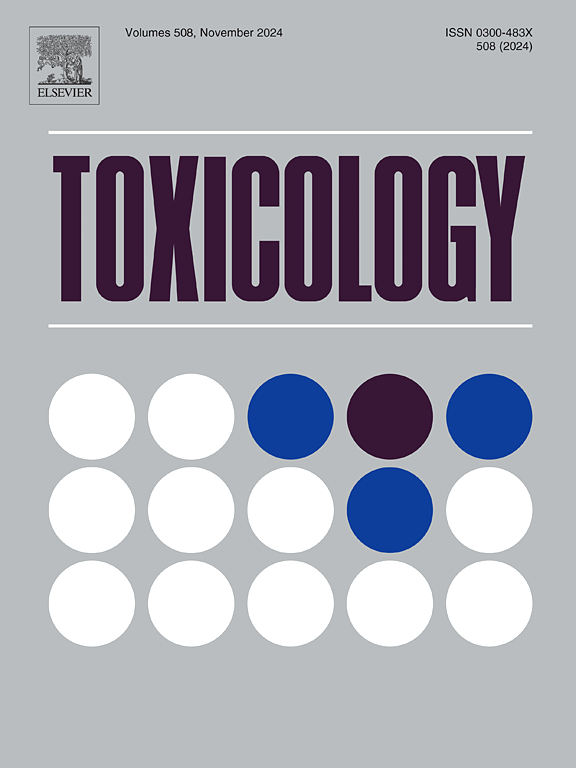Thallium induces metallothionein gene expression in Huh-7 human hepatoma cells
IF 4.8
3区 医学
Q1 PHARMACOLOGY & PHARMACY
引用次数: 0
Abstract
Thallium (Tl) is one of the most toxic heavy metals and is found ubiquitously in the earth’s crust. To investigate the cellular responses to and against Tl cytotoxicity, we conducted DNA microarray analysis using three human cell lines of different origins: SH-SY5Y (neuroblast-derived), HEK293T (embryonic kidney-derived), and Huh-7 (hepatoma-derived) cells. All of the ten genes that showed the highest inductions in Huh-7 cells treated with 60 µM Tl2SO4 for 72 hours are metallothionein (MT) genes. The induction of the MT genes appears specific to Huh-7 cells; increases of 50–140-fold in the ten MT genes were observed in Huh-7 cells, while the increases were less than 4-fold in HEK293T and SH-SY5Y cells by microarray analysis. Investigation of the pathway responsible for Tl2SO4-induced MT expression in Huh-7 cells revealed that the RNA interference-mediated forced downregulation of MTF1 transcription factor resulted in the suppression of Tl2SO4-induced MT gene expressions, but not Tl2SO4-induced cell death, suggesting that MTF1-mediated MT gene expression is insufficient to protect Huh-7 cells against death by Tl2SO4. In contrast, the knockdown of nrf1 worsened Tl2SO4-induced cell death without suppressing MT gene expressions. These results indicate that MT gene induction in response to Tl2SO4 is mediated at least in part by MTF1 in Huh-7 cells. Nevertheless, MT gene induction through MTF1 seems insufficient to prevent the cell death caused by Tl2SO4. Nrf1 appears to be involved in protection against Tl2SO4 toxicity through mechanisms other than MT gene induction.
铊诱导Huh-7人肝癌细胞金属硫蛋白基因表达
铊(Tl)是最有毒的重金属之一,在地壳中无处不在。为了研究细胞对Tl细胞毒性的反应,我们使用三种不同来源的人类细胞系进行了DNA微阵列分析:SH-SY5Y(神经母细胞来源),HEK293T(胚胎肾来源)和Huh-7(肝癌来源)细胞。在60 µM Tl2SO4作用72 小时后,Huh-7细胞诱导率最高的10个基因均为金属硫蛋白(MT)基因。MT基因的诱导似乎只针对Huh-7细胞;微阵列分析发现,在Huh-7细胞中,10个MT基因的表达增加了50 - 140倍,而在HEK293T和SH-SY5Y细胞中,MT基因的表达增加不到4倍。通过对hh -7细胞中Tl2SO4诱导MT表达途径的研究发现,RNA干扰介导的MTF1转录因子强制下调导致Tl2SO4诱导的MT基因表达受到抑制,而Tl2SO4诱导的细胞死亡未受到抑制,提示MTF1介导的MT基因表达不足以保护hh -7细胞免受Tl2SO4的死亡。相反,nrf1的敲低加重了tl2so4诱导的细胞死亡,但没有抑制MT基因的表达。这些结果表明,MT基因对Tl2SO4的诱导至少部分是由Huh-7细胞中的MTF1介导的。然而,通过MTF1诱导MT基因似乎不足以阻止Tl2SO4引起的细胞死亡。Nrf1似乎通过MT基因诱导以外的机制参与对Tl2SO4毒性的保护。
本文章由计算机程序翻译,如有差异,请以英文原文为准。
求助全文
约1分钟内获得全文
求助全文
来源期刊

Toxicology
医学-毒理学
CiteScore
7.80
自引率
4.40%
发文量
222
审稿时长
23 days
期刊介绍:
Toxicology is an international, peer-reviewed journal that publishes only the highest quality original scientific research and critical reviews describing hypothesis-based investigations into mechanisms of toxicity associated with exposures to xenobiotic chemicals, particularly as it relates to human health. In this respect "mechanisms" is defined on both the macro (e.g. physiological, biological, kinetic, species, sex, etc.) and molecular (genomic, transcriptomic, metabolic, etc.) scale. Emphasis is placed on findings that identify novel hazards and that can be extrapolated to exposures and mechanisms that are relevant to estimating human risk. Toxicology also publishes brief communications, personal commentaries and opinion articles, as well as concise expert reviews on contemporary topics. All research and review articles published in Toxicology are subject to rigorous peer review. Authors are asked to contact the Editor-in-Chief prior to submitting review articles or commentaries for consideration for publication in Toxicology.
 求助内容:
求助内容: 应助结果提醒方式:
应助结果提醒方式:


